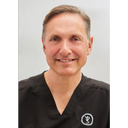It's hard to compare these types of implants directly and say which is "best," because they very are different, and they will behave differently. They will give slightly different appearances, and they will interact with the tissues differently. In addition, we have to remember that we don't just have "cohesive silicone" implants any longer, we have highly cohesive gel implants ("gummy bear"), and those come in round and anatomically shaped versions. Thus, there will be some cases in which a certain type of gel implant will be best, while in others, a saline implant will accomplish the stated goals and do the job well. So, the bottom line is that the answer to this question depends almost entirely on what the specific goals are. In general, saline implants are also less expensive than silicone gel implants, and if cost effectiveness is a primary goal, then that may contribute to the decision of which is "best."In the way of some comparison, however, I think it's useful to look at the statistical performance of different breast implants to gain some insight into how they perform over time. This may be part of the consideration of which is "best" too. You can find the numbers on the websites of all of the manufacturers, so I won't bore you with an exhaustive list of all of these, nor will I cite the numbers of each manufacturer. As an example, I'll mention 3 variables that I think are important to consider when evaluating implant performance statistically, and I'll use the Ideal implant numbers for themselves and the corresponding statistics from Sientra for comparison. The Ideal implant is fundamentally a saline implant. It is a newer design on an old concept of a saline implant with different baffles and chambers containing the saline within the implant (sort of analogous to a "waveless waterbed" as opposed to a single bladder waterbed where the water is contained in one big floppy chamber). Three of the variables that I think are important to look at when comparing saline to silicone gel implants are: reoperation rate, deflation/rupture rate, and rippling/palpability/visibility. The numbers provided by the Ideal implant company show a reoperation rate from all causes of 14% over 2 years, and Sientra reports a reoperation rate of 12% over 3 years. The rates are close, but be aware that Sientra's numbers are based on 3 years and not 2 years, and the number of patients studied was over 1000, whereas it was only 100 in the Ideal implant group. Thus, the real rate may be a bit higher for the Ideal group over time and more patients; it's still early to tell for sure. With regard to rupture or deflation, typical of all saline implants, the Ideal implants showed a deflation rate of 5% over 2 years, whereas there was only a 2.5% rupture rate in the Sientra group, again over 1000 patients in 3 years. Most surgeons agree that one of the disadvantages of saline implants is that they rupture or deflate a bit more frequently than silicone gel, and the Ideal implant design doesn't seem to change this relationship much. Lastly, another one of the main distinguishing features between silicone and saline implants is wrinkling or rippling. The Ideal implant reports a 4% rate of this over 2 years, whereas Sientra reports 0.5% over 3 years, again in 10 times more patients. I know this number crunch seems a bit complicated, but it is part of the analysis that we surgeons go through when answering this type of question relating to which implants are "best." Again, these numbers are available online, and in much more detail than I have presented here; I have only given you a brief example of the way that I go about this analysis.In summary, I would say the Ideal implant may be the answer for some people depending upon their individual goals and expectations, while looking at the issue from another perspective, they may not seem as good as a cohesive, or a highly cohesive gel implant. My best advice is to consult with board certified plastic surgeons who have experience with all different types of breast implants and breast augmentation techniques, so that you can figure out what the best implant is for your personal goals. In addition to being certified by the American Board of Plastic Surgery, your surgeon should also voluntarily participate in the Maintenance of Certification program administered by that board. This is the best way to know that your surgeon not only has the best training and experience for the procedure, but that he or she has maintained currency in the certification requirements as opposed to practicing on a "lifetime" certificate which has only been reviewed once at the beginning of his or her career. For more information on this you can visit ABplsurg.org or ABMS.org. Good luck.







